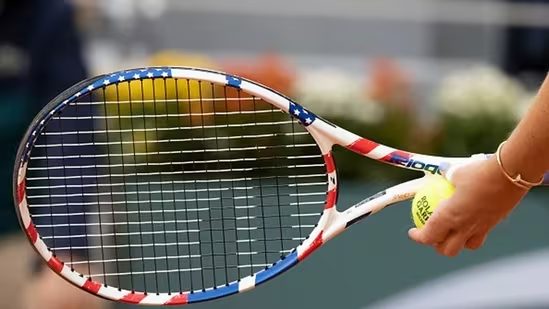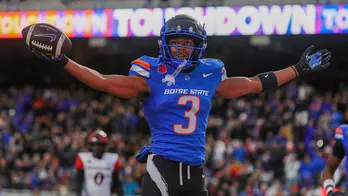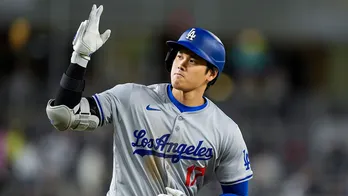Beyond Break Point: The schism the fallout caused across Indian tennis
This is not a carefully thought through review of Break Point docu series (Zee5) about the Leander Paes-Mahesh Bhupathi partnership. That’s happening everywhere else. This is just a gut response having watched its seven episodes straight up and finding oneself in reverse therapy. Break Point triggered every emotion felt while following the partnership, no, sorry, saga, no, soap opera through three jobs and what feels like just over 20 years.  PREMIUM
PREMIUM
For any Indian below the age of 30 to understand what Paes and Bhupathi (or ‘Boopatty-Paes’ as the western chair umpires called out their names) represented to the rest of us, put yourself in early 1990s. The PT Usha era was drawing to a close as hockey lurched from one tawdry drama to the next. Our freshest global sporting heroes happened to be teenagers—Leander Paes, Sachin Tendulkar and Viswanathan Anand. Anand is older than the other two by three years, but became India’s first chess Grand Master a year before Tendulkar’s debut and two years before Paes’ junior Wimbledon title.
It was Paes’ hypermanic, chest-beating, flag-waving Davis Cup performances that made tennis India’s most-followed individual sport. India were Asian tennis leaders with their regular appearances in the Davis Cup World Group, thorn in many a European side, cheekily tearing up form books and predictions. When Paes won India’s first individual Olympic medal after 44 years, it was like we saw our athlete walk on water. His coming together with Bhupathi of the backhand and bomb serve became a combination of sporting synchronicity and desi showbiz.
Those days, Indian Olympic expectation rested on the hockey team—more on history and prayer—and ahead of anything else (not shooting, wrestling, boxing, badminton) tennis. That’s what tennis used to be. Because of what these two guys—24-karat influencers before the word was even invented—did together across a short snatch of their sport’s history.
I remember walking back well past 1am from the Athens Tennis Centre with a fellow Indian reporter after Leander and Mahesh lost their Olympics bronze medal match to Ancic-Ljubicic. It had taken four hours, the 14-16 third set lasting 2h24mins. Their second defeat in two days crushed us both and we didn’t speak to each other until the next morning. It felt like someone in the family had died.
What the documentary cannot show or tell perhaps is the schism that the fallout between the two caused across Indian tennis. It was as if everyone had to take sides, occupy a spot in one camp or the other: officials, coaches, fellow players, juniors, organisers, even reporters. What made it more awful was that on both sides, people were sociable, courteous, patient—and equally stressed. They’d been through common struggles on varied routes, and wanted the best for their sons/friends and loved them deeply like we do children and friends.
Towards the end of Break Point one of them says, “there was a bond that we had regardless of the bickering and the press.” To which the press could well jump to its feet and say it’s a bit late to be shooting the messengers and to remind them of another bond they may not care about. Between tennis beat reporters and the collective that was Team Bhupathi-Paes. It was born from their in ya face energy and ambition; naturally alongside their deteriorating relationship, that bond was forced into dejected disintegration too. The reason we wanted them to be together was because they won together. And when they won together, we were showered with global tennis stardust.
Break Point and the footage it contains reminds us of those years again except this time Bhupathi and Paes confirm that we didn’t invent stuff out of thin air. Paes uses the words ‘chaalupanti’ and ‘keeda’ to describe incidents and people around him but the fallout of their falling out left Indian tennis suffused by those two words. Stories pile on top of one another in dreadful detail—post-1997 Roland Garros, Indianapolis, Doha, everywhere—with their families trying to keep things together.
As time dragged on, all that was left was not showbiz or magic, but just chaalupanti and keeda around every corner. Never mind coach, physio or manager, you think what these guys needed before any of them was a therapist/counsellor on their entourage.
As far as their partnership being inspirational goes, it certainly did lead to many Indian players setting out on the doubles tour, winning titles. In doubles Slams, Rohan Bopanna is the last Indian to win one—the 2017 French Open mixed with Canadian Gabriela Dabrowski. The last Indian pair was Bhupathi-Sania Mirza in Roland Garros 2012. In 2015, Paes won three of four mixed Slam titles with Martina Hingis and completed his career mixed doubles Slam with her in 2016.
But as Vijay Amritraj once said, “Nobody starts playing tennis thinking of becoming doubles or mixed doubles specialist.” The fact remains that the last time India fielded its players in the singles main draw of every junior Grand Slam was in 2017. In 2021 that figure was zero. Before Covid becomes the crutch, in 2018 and 2019 too, other than the junior Australian Open, there were no Indians in any of the Slams juniors’ singles main draws.
To the makers of Break Point, thank you for the memories, no matter their triggers. To the two stars of Break Point, we will always love you and what you did together. You were successors of a rich tennis heritage who expanded and refashioned its boundaries. Yet, we must all accept that that heritage today is in an absolute shambles.
Experience unrestricted digital access with HT Premium
Explore amazing offers on HT + Economist Start 14 Days Free Trial Already Subscribed? Sign In
Disclaimer: The copyright of this article belongs to the original author. Reposting this article is solely for the purpose of information dissemination and does not constitute any investment advice. If there is any infringement, please contact us immediately. We will make corrections or deletions as necessary. Thank you.







